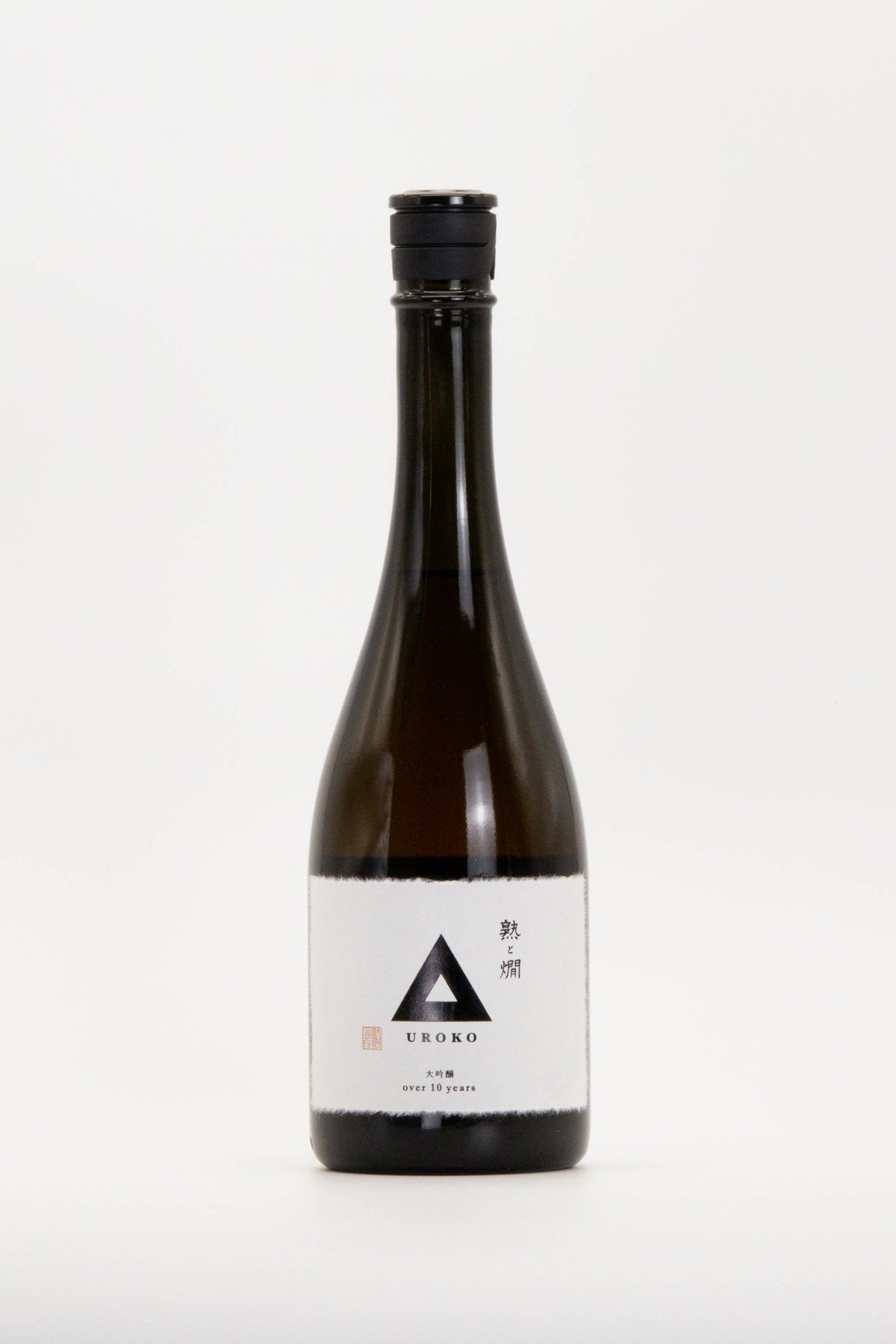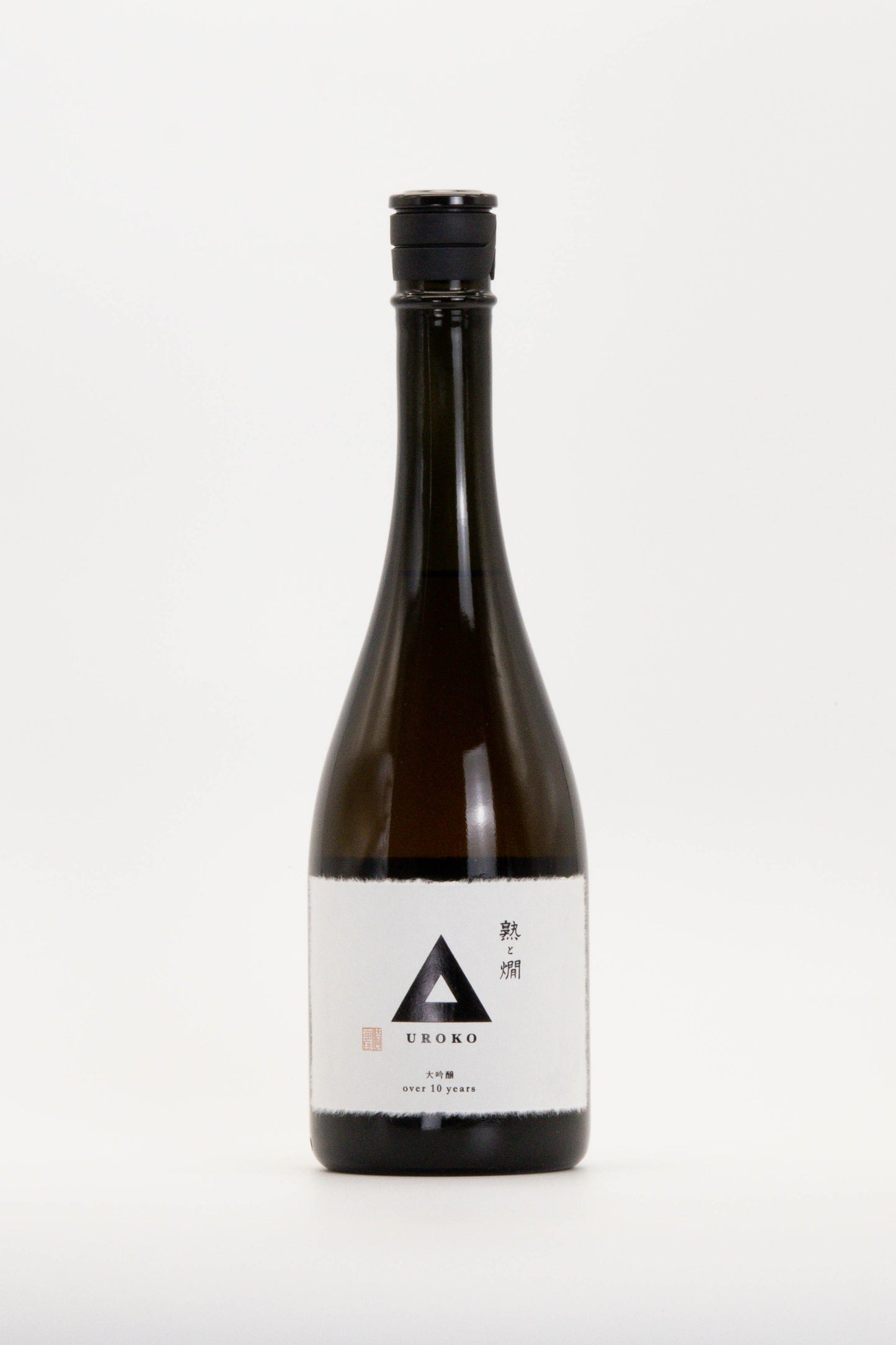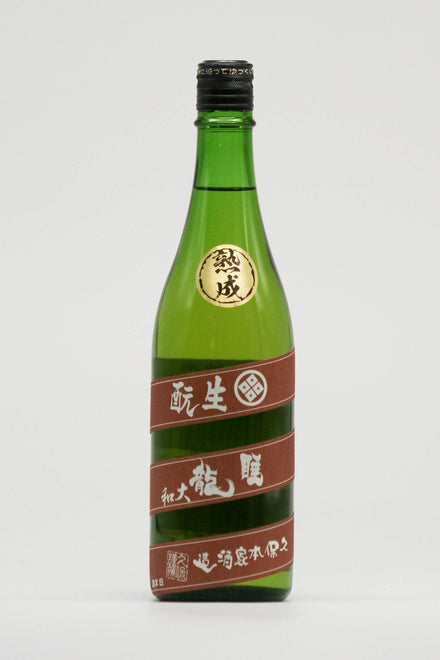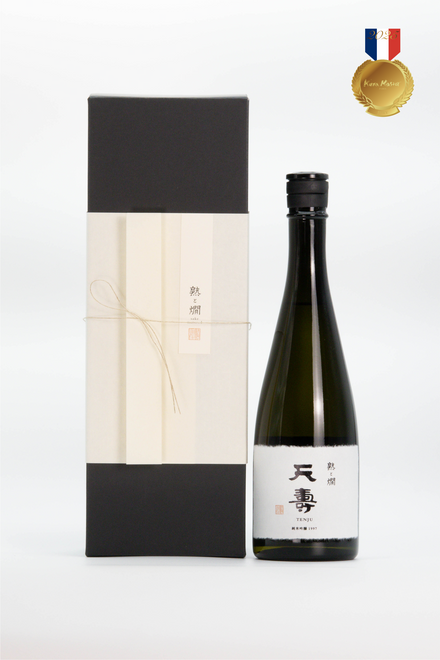
A blend of Daiginjo and Junmai Daiginjo that have been aged in caves for over 10 years, we created an original sake that is both matured and warm. It has a dry mouthfeel and a sweet aroma. It is the perfect sake to enjoy with a meal.
Azuma Rikishi Daiginjo Uroko Over 10 Years
| Vintage | |
| Years aged | over 10 years |
- 10 years or more
- 10,000 – 49,999yen
- All Products
- As aperitif and/or with starters
- Golden yellow
- Throughout the meal
- 熟と燗オリジナル
- Brewer:Shimazaki Sake Brewery
- Alcohol:17 degrees
- Volume:720ml
Couldn't load pickup availability
[ Drinking alcohol under the age of 20 is prohibited by law. ]
This original blend of aged and warm sake is made by blending multiple daiginjo sakes that have been aged for over 10 years in the brewery's own caves (※) with junmai daiginjo sake that is also over 10 years old, resulting in a deeper flavor.
It has an elegant and dry mouthfeel with a subtle sweetness and umami flavor.
Serve slightly chilled as a Western appetizer, or at room temperature as a side dish such as butter-sautéed meunière.
Thanks to its skillful blend, it can be easily paired with a variety of meals, making it the ultimate drink to have with a meal.
*A cave dug into the mountainside to manufacture tanks at the end of World War II.
In an environment similar to the finest wine cellars in France and Italy, approximately 100,000 bottles of alcohol continue to age in a 600m long space where eight caves intersect.
- about
-
Type Blending Rice polishing ratio 35% Yeast type ー Ingredients/raw materials Rice (domestic), rice malt (domestic rice), brewed alcohol Rice type Yamada Nishiki Origin of rice Hyogo prefecture Toji(Brew Master) ー Assemblage 有
- Recommended occasions/temperature
-
- How to store
-
- Delivery dates and charges
-

Tasting comments
-
Hidekazu Ishiwata
(Former National Tax Bureau Chief Appraiser)Pale golden yellow.
Slightly burnt top nose with notes of raisins, and a hint of caramel and cocoa.
In the mouth, there is a hint of nuts, and dried fruit accented by a hint of rice.
It's sweet but dry on the mid-palate, with a distinctive umami.
The sake has a consistent quality that I would liken to a Tokyo Sumo Wrestler. -
Akiko Toda
(Director of ITTEKI, Japan Sake and Meat Research Institute)The aroma of lotus honey and honeycomb. Even after aging, it retains the floral scent of ginjo sake, giving it an elegant impression. On the palate, the aroma of savory rice crackers and nuts comes into play, changing the impression. The attack is smooth, but in the middle it becomes more defined, and the aftertaste is sharp. It has a dry, bitter, and acidic finish.
At first, I thought he was a slender, sparkling prince, but he turned out to be a surprisingly dry and cool man. -
Yuji Yamauchi
(Yushima Tenjinshita Sushi Hatsu 4th generation / 1st JSA SAKE DIPLOMA competition winner)Scented butter, banana spread, cotton candy. There are notes of moist croissants, and a gentle spice like cinnamon and cloves, and the texture feels soft. The velvety feel and moist texture are reminiscent of an autumn forest.
-
Christopher Hughes
(WSET Sake Educator)Mature tropical fruit notes in background. Well-rounded, elegant with light body and velvety texture. Slight bitterness at the end but with nicely layered mushroom notes and a pleasant umami. Finish is long with notes of chestnut, walnuts, roasted ham, and honey.
-
Nobuhiro Ueno
(Juku to Kan Bar Master / Permanent Director of the Toki Sake Association)Savory and delicious taste
A gentle sweetness reminiscent of bekko candy.
From sip to finish, the experience is smooth with no sharp, irritating corners.
The umami flavor blossoms as it slides down your throat.
The aftertaste of umami and fragrant aroma continues for a long time.
A matured ginjo sake that is both elegant and flavorful.
Brewer


Shimazaki Sake Brewery
Founded in 1849, the second generation owner, Kumakichi, named the sake brand ``Higashi Rikishi'' because he was an unparalleled fan of sumo. Since then, with the motto of ``Higashi Rikishi, famous sake that doesn't give up on hard work,'' they have continued to produce strong, delicious sake that fully brings out the flavor of the rice. In 1970, they began working on long-term aging of sake, and to date, they have held Daiginjo from each year without missing a single year. Utilizing a natural cave as a ripening cellar, we are taking on the challenge of creating new flavors of sake in a unique and blessed natural storage environment.
The story of how the company started working on aged sake is that in 1970, Toshio, the fifth generation, started storing ginjo sake for the Kanpyōkai at the time. From this year onwards, we started stocking sake of the same quality every year in internal tanks, etc., for sake that had been prepared for exhibition, but as there was still no market need for it, so it was used for blending. In 1978, the brewery was unveiled to people in the industry and received high praise, and with confidence it became a full-fledged effort to make aged sake, which continues to this day. We have strengthened our efforts by building underground storage on the factory grounds to ensure a stable aging environment. In 1999, a cave on the site of a huge munitions factory that remained in the local area was used as a new aging cellar to create a unique flavor.



